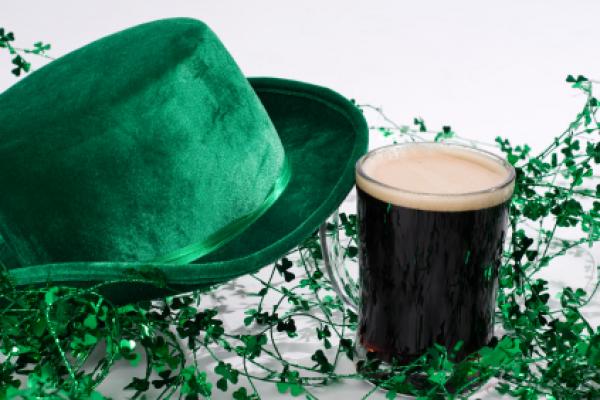 “Thank heaven for humor!” – Doc Meek
“Thank heaven for humor!” – Doc Meek
Thursday, March 15, 2012. Today I am grateful for humor, heaven, honorable Irishmen, and St Patrick’s Day (March 17). – Doc Meek
Maxine says: “If you find a four-leaf clover . . . you have entirely too much time on your hands.” 😮
As a “fellow Irishman,” I want to thank Maxine and her creator, John Wagner, for adding beloved humor to our days!”
Doc Meek, Thurs, Mar 15, 2012, Sherwood Park, Alberta, CANADA
P.S. SAINT PATRICK’S DAY IN CANADA
Text and image from: http://www.timeanddate.com/holidays/canada/st-patrick-day
St Patrick’s Day is a public holiday in the Canadian province of Newfoundland and Labrador on the nearest Monday to March 17 each year.
This event commemorates the life of St Patrick, a missionary who worked in Ireland and is said to have died on March 17 in the fifth century. He played an important role in converting the inhabitants of Ireland to Christianity. Now, his feast day is an opportunity to celebrate Irish culture.
 St Patrick’s Day, which is an official holiday in Newfoundland and Labrador, celebrates Irish culture, history and traditions. ©iStockphoto.com/Garth Johnson
St Patrick’s Day, which is an official holiday in Newfoundland and Labrador, celebrates Irish culture, history and traditions. ©iStockphoto.com/Garth Johnson
What do people do?
In some cities, notably Toronto and Montreal, large scale St Patrick’s Day parades are held, often on the Sunday closest to March 17. The parade in Montreal has been held every year since 1824. However, the first recorded celebration of St Patrick’s Day was in 1759 by Irish soldiers serving with the British army following their conquest of part of New France, a French colony in North America. In some places there are Irish cultural events. For instance, the Irish Association of Manitoba organizes a three-day festival of Irish culture in the week of St Patrick’s Day.
People who have an Irish background or enjoy Irish culture may hold Irish themed parties and serve traditional dishes, such as Colcannon or Irish stew. Colcannon is a dish of mashed potatoes mixed with kale or cabbage and Irish stew is traditionally made with lamb and root vegetables. Traditional Irish drinks include stout, a dark beer, and whiskey. Other parties may be themed around the color green. Guests may be expected to wear green clothes and only green food and drink is served.
Public life
St Patrick’s Day is an official holiday in the province of Newfoundland and Labrador. It is observed by the provincial government, but post offices, stores, many schools, businesses and other organizations are open. Public transport services run on their regular timetables.
St Patrick’s Day is not a public holiday in other parts of Canada. Schools, organizations, businesses, stores and post offices are open as usual. Some organizations may arrange St Patrick’s Day parties, but these do not usually disrupt normal affairs. Public transport services run on their regular timetables. In cities, where parades or large public events are held, there may be some congestion or road closures.
Background
St Patrick’s Day marks the feast day and anniversary of the death of a Christian missionary known as Patrick. He was born in the year 387, probably somewhere near the present day border between Scotland and England. At the age of 16, he was captured and taken to Ireland as a slave. During this period, he became very religious and after six years he fled back to his family.
Later in his life, he returned to Ireland as a missionary. He is said to have played an important role in converting the inhabitants of Ireland to Christianity and in ridding the island of snakes. However, there is no evidence that there have been any snakes in Ireland in the past 10,000 years. The “snakes” he drove out of Ireland may represent particular groups of pagans or druids. It is believed that St Patrick died on March 17 probably in the year 461 or 493 (according to different sources). St Patrick is buried under Down Cathedral in Downpatrick, County Down, and is one of the three patron saints of Ireland. The other patron saints are St Brigid of Kildare and St Columba.
St Patrick’s Day celebrations were brought to Canada by Irish immigrants. The day is a bank holiday in Northern Ireland and a public holiday in the Republic of Ireland. In the rest of the United Kingdom, the United States, Australia and New Zealand, it is celebrated, but is not an official holiday.
Symbols
The most widely-seen St Patrick’s Day symbols are the colors green, and sometimes orange, and the shamrock. The shamrock is a symbol of Ireland and a registered trademark of the Republic of Ireland. It is the leaf of the clover plant, which grows on the ground, often among grass and an Irish Catholic symbol of the Holy Trinity. It is sometimes confused with the four-leaf clover, which is a variety of the three-leaf clover and is thought to bring good luck.
About St. Patrick’s Day in other countries
Read more about St. Patrick’s Day.
Text and image above from: